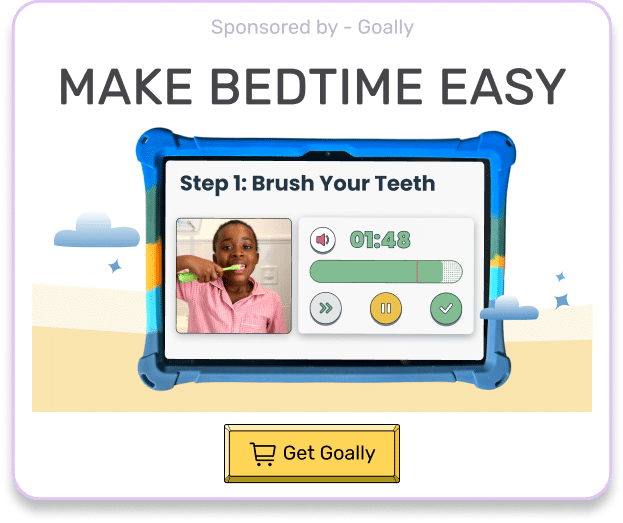When you see a child flapping their hands with excitement, you might wonder what’s going on. Hand flapping is a common self-stimulatory behavior (stimming) in neurodivergent kids, particularly those with autism. In this post, we’ll delve into the reasons behind hand flapping autism, the science that explains it, and how you can support your child. We’ll also discuss how Goally’s learning tablet and apps can be a valuable resource for you and your child in navigating the world of hand flapping.
Table of Contents
What is Hand Flapping?
Hand flapping is a repetitive movement involving rapid, uncontrolled flapping of the hands or fingers. It’s a common form of self-stimulatory behavior (stimming) observed in neurodivergent kids, particularly those with autism. Stimming can take various forms, such as rocking, spinning, or tapping, but hand flapping is one of the most noticeable.
Reasons for Hand Flapping in Autism
Hand flapping serves several purposes for kids with thinking and learning differences.
Here are some reasons why they engage in this behavior:
- Self-regulation: Hand flapping helps kids with autism regulate their emotions and sensory input. It can provide a sense of calm and comfort during overwhelming situations.
- Expression of emotions: Neurodivergent kids may use hand flapping to express excitement, happiness, or anxiety. It’s a non-verbal way of communicating their feelings.
- Focus and concentration: Hand flapping can help kids with autism concentrate on a task or thought by blocking out distractions.

Now that we understand the reasons behind hand-flapping autism let’s explore the science that explains this behavior.
Understanding the Science Behind Hand Flapping Autism
Research suggests that hand flapping in autism is linked to differences in brain function and sensory processing. Kids with autism may have heightened sensitivity to sensory stimuli, making them more prone to engage in self-stimulatory behaviors like hand flapping. Moreover, neurodivergent kids may have difficulty processing and integrating sensory information, leading to an increased need for self-regulation and self-soothing behaviors.
Should Parents Be Concerned About Hand Flapping?
It’s essential to remember that hand flapping is not inherently harmful. In most cases, hand flapping is a natural and healthy way for neurodivergent kids to self-regulate and express their emotions. However, if hand flapping becomes disruptive or causes injury, it may be necessary to seek professional guidance and support.
As a parent, understanding and supporting your child’s hand flapping is crucial.
Supporting Your Child with Hand Flapping Autism
- Observe and learn: Pay attention to when and why your child engages in hand flapping. This will help you identify triggers and better understand their needs.
- Provide a safe environment: Ensure your child has a safe space to engage in hand flapping without causing harm to themselves or others.
- Encourage alternative forms of self-regulation: Teach your child other self-soothing techniques, such as deep breathing or squeezing a stress ball, to provide them with additional coping strategies.
- Seek professional support: If hand flapping becomes problematic, consult with a therapist or specialist who can provide guidance and tailored interventions.

Read more: My Child is Stimming When Excited | Autism
Supporting your child with hand flapping autism is essential, but how can Goally help in this journey? Let’s find out.
How Goally Can Help with Hand Flapping Autism
Goally is a learning tablet designed specifically for neurodivergent kids, offering a range of apps and tools to support their unique needs.
Here’s how Goally can help with hand flapping autism:
- Visual schedules: Goally’s visual schedules can help kids with autism better understand and anticipate daily routines, reducing anxiety and the need for hand flapping as a coping mechanism.
- Sensory breaks: The Goally app allows you to schedule sensory breaks throughout the day, providing your child with designated times to engage in hand flapping or other self-regulation activities.
- Emotion regulation tools: Goally offers tools to help kids with autism identify and express their emotions, potentially reducing the need for hand flapping as a form of emotional expression.
With Goally’s support, you can help your child navigate the world of hand-flapping autism more effectively. But it’s also essential to embrace your child’s unique journey.
| Support Strategies | How Goally Can Help |
|---|---|
| Visual schedules | Help kids with autism better understand and anticipate daily routines |
| Sensory breaks | Provide designated times for self-regulation activities |
| Emotion regulation tools | Help kids with autism identify and express their emotions |
Embracing Your Child’s Unique Journey
Hand flapping autism is just one aspect of your child’s neurodivergent journey. By understanding the reasons behind hand flapping and providing support, you can help your child thrive. Goally’s learning tablet and apps offer valuable resources to assist you and your child in navigating the world of hand flapping and beyond. Remember, every child is unique, and embracing their individuality is the key to their success.
This post was originally published on 05/10/2023. It was updated on 06/29/2023.

Goally
We help parents teach their kids life skills, like doing bedtime and morning independently. Backed by science, we incorporate evidence-based practices and expert-informed designs in all of our apps and content.






